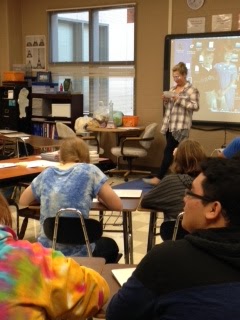In pairs, students will
face off in a competition. Student A
will close their eyes, reach into the paper bag that Student B is holding, pull
out a slip with a question, and hand it to Student B. Student B will read aloud the question for Student
A to answer. If Student A answers
correctly, then they get to keep the slip of paper and count it as a point; if
they get it wrong, it goes back into the bag.
If Student A had drawn out a slip that said 'Boom!' then they would be
required to put all of the slips they had collected from previous rounds back
into the bag and start from 0. Students
will take turns and the student with the most points wins.
I love this because every participant is active, questions do get repeated as students put wrong answers or "Boom" answers back into the bag, mistakes get reframed as iteration, learning feels like play, you can play it on multiple days, and it allows for peer assessment.
I used this two different ways:
1. I reviewed for French One's midterm with 45 different questions typed up and 6 Booms.
2. I also used this for French Three to practice Passé Composé and Imparfait. I typed up 13 Imparfait translations, 14 Passé Composé questions, 4 Booms, and 13 questions where they had to choose the difference between the two tenses. Students played on day one with their notes, and then without their notes on day two for Game Based Learning. I added the use of the white boards to allow students to write out the correct formations.
My Passé Composé, Imparfait version is available and ready to print on my store:






















